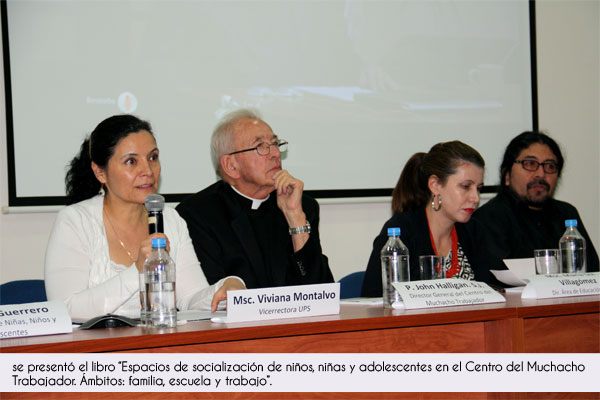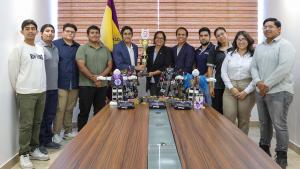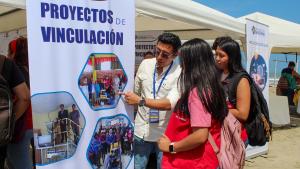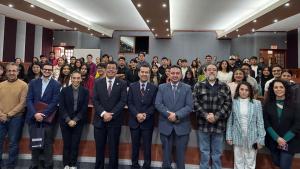QUITO: Se presentó libro: "Espacios de socialización de niños, niñas y adolescentes en el Centro del Muchacho Trabajador. Ámbitos: familia, escuela y trabajo"
QUITO: Se presentó libro: "Espacios de socialización de niños, niñas y adolescentes en el Centro del Muchacho Trabajador. Ámbitos: familia, escuela y trabajo"

UPS- Quito presented the book "Espacios de socialización de niños, niñas y adolescentes en el Centro del Muchacho Trabajador. Ámbitos: familia, escuela y trabajo"
UPS- Quito presented the book "Espacios de socialización de niños, niñas y adolescentes en el Centro del Muchacho Trabajador. Ámbitos: familia, escuela y trabajo" written by René Unda Lara, Daniel Llanos Erazo and Luis Herrera Montero.
The attendees were Viviana Montalvo, Vicepresident UPS-Quito, María Sol Villagómez, Director of the education department at UPS, René Unda, Director of the Children and Adolescence research center (CINAJ, in spanish) and the master's degree in childrens and adolescents social policies. The people who atended on behalf of the Centro del Muchacho Trabajador (CMT, in spanish) were John Halligan S.J., General Director of CMT, Juan Enrique Bazán from Save the Children in Latin America (in a videoconference from Perú), Javier Cueva, from EDUFUTURO, María Braun, the Under Secretary of special and inclusive education and Fabricio Guerrero, Representative of CMT.
The UPS-Quito Vice president stressed the University's mission and its cooperation with CMT since they have a common goal, which is to improve children's and adolescents' living conditions. She also thanked the authors and the UPS publishing house Abya Yala.
Halligan said this book is a valuable contribution based on what a child's and adolescent's activities represent since they do not only play and study but work and make money. Fabrico Guerrero, a former member of CMT, told the story of when he was a shoeshiner and how entering CMT helped him become a better person.
Finally, Unda thanked all those who cooperated with the book and raised the question of what good is it to research children's and adolescents' activities in the case of CMT? He talked about boys, girls and adolescents and asked whether they really wanted to work or if somebody forces them to do so. He highlighted the main aspects of CINAJ in researching children and adolescents.





Follow us
Follow us